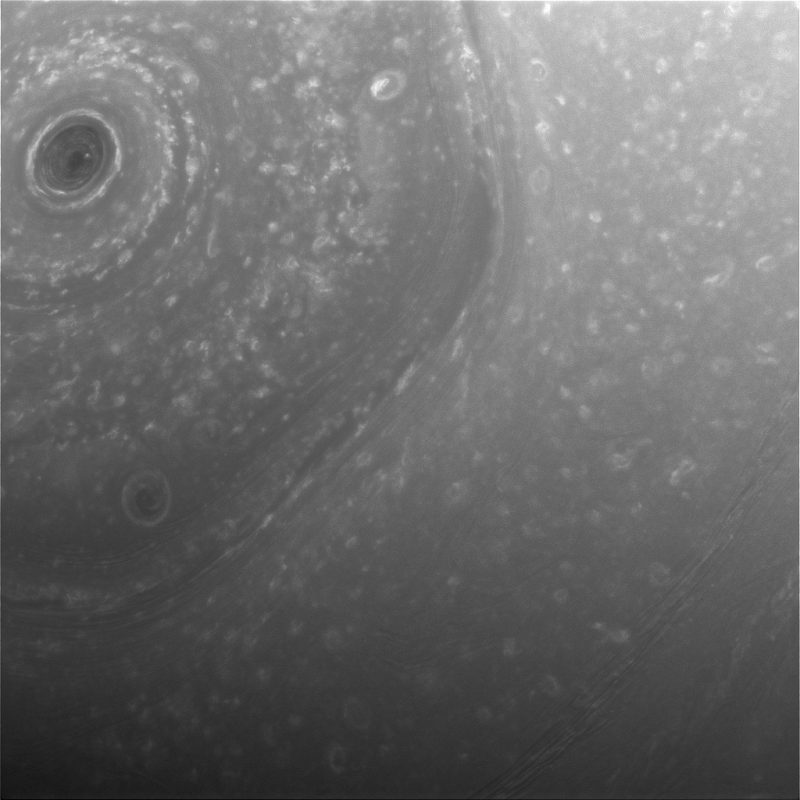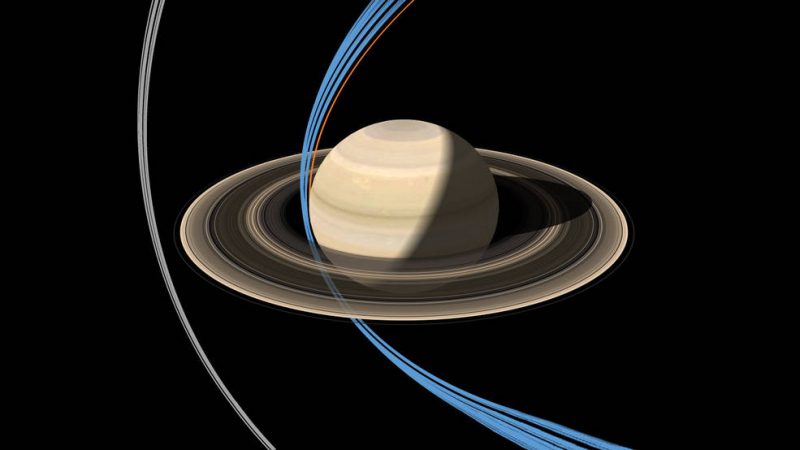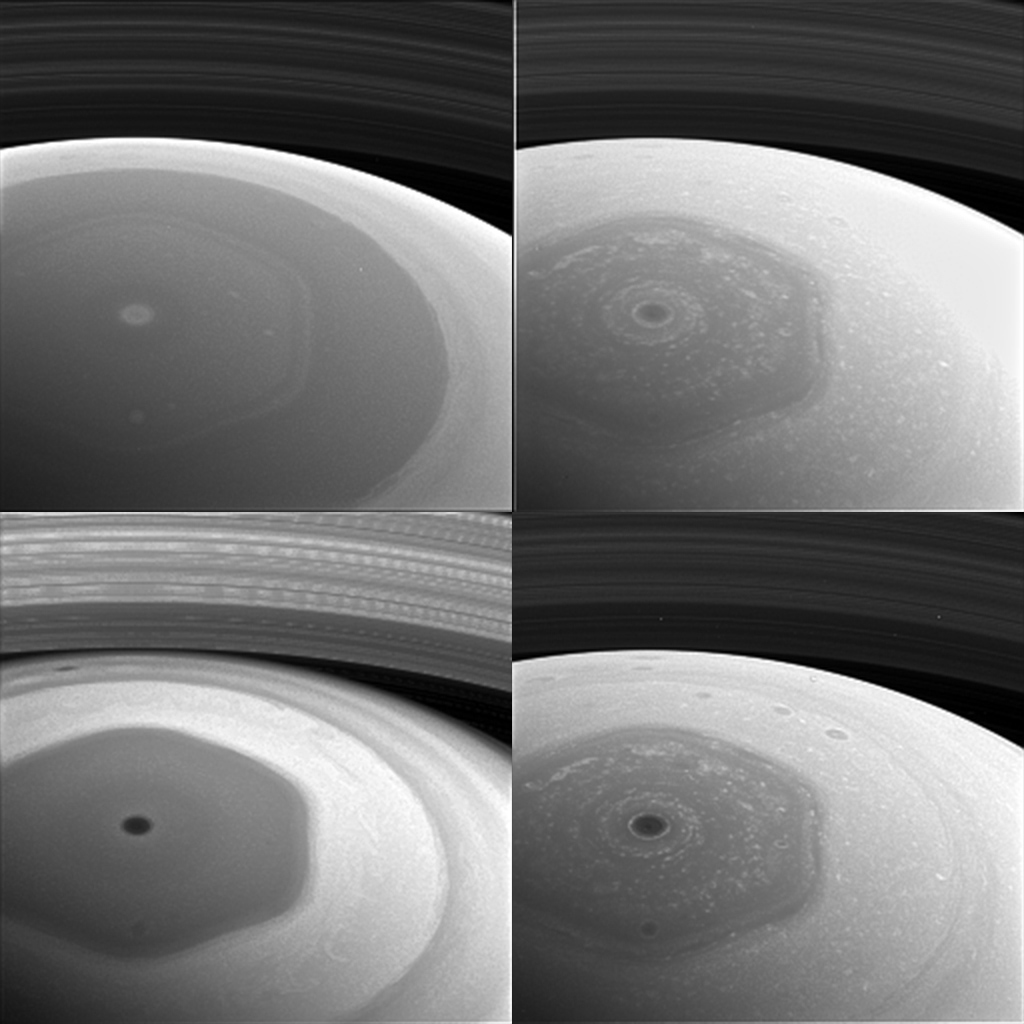
NASA’s Cassini spacecraft – in orbit around Saturn since 2004 – will finish its mission with a grand finale in 2017. Mission controllers have put the spacecraft into a new orbit – its penultimate, or second-to-last orbit – called a Ring-Grazing Orbit on November 30, 2016. On December 2 and 3, 2016, the craft obtained its first views of Saturn’s atmosphere since beginning this latest mission phase. The new images let you peer down at Saturn’s north pole, glimpsing its atmosphere and rings from up close, with a good look at the planet’s strange, northern polar hexagon.
Cassini imaging team leader Carolyn Porco at Space Science Institute, Boulder, Colorado said:
This is it, the beginning of the end of our historic exploration of Saturn. Let these images — and those to come — remind you that we’ve lived a bold and daring adventure around the solar system’s most magnificent planet.
Cassini’s imaging cameras acquired these latest views about two days before the spacecraft’s first ring-grazing approach to the planet.

Each new orbit around Saturn lasts about a week. There will be 20 orbits in this configuration, which carries the spacecraft high above Saturn’s northern hemisphere before sending it skimming past the outer edges of the planet’s main rings. Future passes will include images from near closest approach, including some of the closest-ever views of the outer rings and small moons that orbit there.
The next pass by the rings’ outer edges is planned for December 11. The ring-grazing orbits will continue until April 22, when the last close flyby of Saturn’s moon Titan will once again reshape Cassini’s flight path. With that encounter, Cassini will begin its Grand Finale, leaping over the rings and making the first of 22 plunges through the 1,500-mile-wide (2,400-kilometer) gap between Saturn and its innermost ring on April 26.
On September 15, 2017 the mission’s planned conclusion will be a final dive into Saturn’s atmosphere.
During its plunge, Cassini will transmit data about the atmosphere’s composition until its signal is lost.
See more images: Cassini mission to Saturn Hall of Fame

Bottom line: NASA’s Cassini spacecraft – which has been orbiting Saturn since 2004 – is nearing its grand finale in 2017. A new orbit in preparation for the end of the mission shows scenes from high above Saturn’s northern hemisphere, including the planet’s intriguing hexagonal jet stream.











